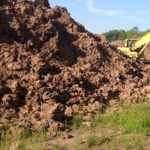New York City Clean Soil Bank Benefits Many
New York City – Developers on brownfield cleanup projects commonly excavate deep-seated, clean native soil from beneath historic fill in order to develop basements and sub-grade parking. Although the clean soil has economic value, developers usually have no immediate use of this soil and often dispose of it at permitted facilities, for which they pay a substantial disposal fee. These facilities th en sell this material at substantial cost to other developers and City agencies as clean backfill on new development or capital construction projects. This process is unnecessarily costly and causes excessive truck transport and associated air emissions.
en sell this material at substantial cost to other developers and City agencies as clean backfill on new development or capital construction projects. This process is unnecessarily costly and causes excessive truck transport and associated air emissions.
In late 2012, the New York City Department of Environmental Protection (NYCDEP) established the NYC Clean Soil Bank – a landmark initiative to enable developers to significantly reduce the costs of importing or exporting clean soil from a site. The Clean Soil Bank enables developers that perform cleanups approved by NYCDEP to transfer clean soil under an omnibus Beneficial Use Determination (BUD) issued by New York State Department of Environmental Conservation (NYSDEC) directly to government construction projects or private developments overseen by NYCDEP that need clean fill. In the process, soil tipping and purchase fees are eliminated.
This program has many important advantages including the following:
- By recducing costs to developers, the Clean Soil Bank acts to off-set cleanup costs and provides a powerful incentive to develop brownfield properties.
- By reducing City capital construction costs for the purchase the clean soil, the Clean Soil Bank saves government financial resources.
- By matching projects that are in close proximity, truck transport mileage and associated vehicular emissions can be reduced.
To learn more, please read the Clean Soil Bank Program Overview v 1 0 and the Clean Soil Bank Fact Sheet.